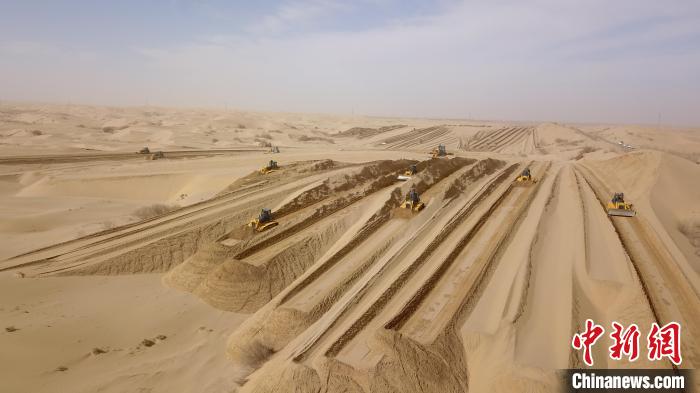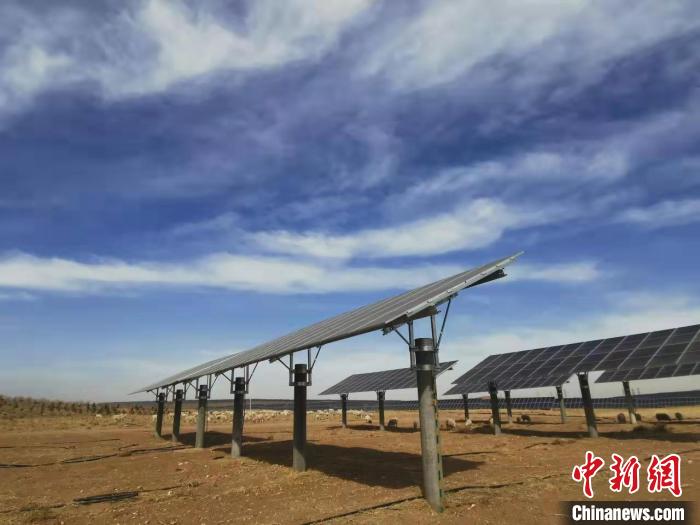Photovoltaic power project in China's Inner Mongolia helps control desertification, brings wealth to locals

File photo shows the Kubuqi Desert in north China's Inner Mongolia Autonomous Region. (Photo/Peng Fei)
North China's Inner Mongolia Autonomous Region has started building a photovoltaic power project in the Kubuqi Desert in an effort to help control desertification and bring wealth to locals.
Located in the Hangjin Banner, Erdos city, the photovoltaic power station will have a power generating capacity of 2 million kW and cover a land area of 100,000 mu (6,666.67 hectares) upon completion. Apart from generating green energy, the vast number of solar panels used in the project will also act as a largescale windbreaker, helping fix sand in place, reduce ground temperatures, and preserve soil moisture levels, thus contributing to desertification control in the area, as noted Li Yongpeng, general manager of a company dedicated to sand control through photovoltaic industry in Kubuqi Desert.
“Statistics show that a 1 million-kW photovoltaic power station will save about 440,000 tonnes of standard coal annually, and when built on a desert, it will curb desertification on a land area of 4,000 hectares. To achieve the same results, 640,000 trees would need to be planted,” Li added.

A photovoltaic power station project in the Kubuqi Desert. (Photo/Peng Fei)
Zhang Xiangqian, a worker from a local desertification control company, introduced that local farmers can also grow crops and develop a breeding industry there, in this way gaining an additional income.
“The combination of photovoltaic power generation with farming and breeding helps curb desertification and realize China’s carbon neutrality goal,” observed Wang Yuanfeng, director of the Carbon Neutral Technology and Strategy Research Center at Beijing Jiaotong University.
Photos
Related Stories
- China's new household photovoltaic capacity more than doubles in 2021
- Photovoltaic agriculture emerges as effective approach to promote rural vitalization
- Natural art of desert in NW China
- China starts wind power, photovoltaic projects in deserts
- Int'l desert forum seeks to tap green energy potential
- Panda-shaped photovoltaic plant demonstrates China's firm effort on cutting carbon emission
- Photovoltaic industry helps to promote rural vitalization in Guizhou
- "Giant panda" aids China's coal city in clean energy development
- Photovoltaic power station in north China's village
- NW China township turns desert areas into arable land
Copyright © 2022 People's Daily Online. All Rights Reserved.










